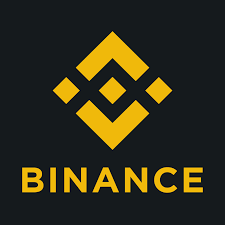When working in retail, finance, and manufacturing (sales) industry, you often come across one unavoidable piece of software.
A Customer Relationship Management software or what is abbreviated to CRM.
Now what really is really astonishing is when people ask how a CRM can actually help their business. Often one gets asked what CRM stands for or even means!
Now granted, it is a technical and industry-specific jargon depicting an online tool. More specifically, it is software used on hardware like PCs, tablets, scanners, point-of-sale devices, and modern cash registers).
What it does, however, is something many businesses both small and large take for granted – and mostly to their detriment.
The purpose
We use CRM solutions a lot more than we think. Take our Smartphones for instance: they are basically miniature customer (data or content) managing tools and though personalized, they serve the same function.
Now to put this into perspective very quickly and simply: our phones store and manage all our contacts. Our friends, family, businesses, and clients are kept in records primarily to help us access and communicate with them quickly.
Mobile phones, have also evolved to now enable you to not only manage your contacts to just make calls or send SMS. You can now share all sorts of content with via the various social media platforms.
Each of these platforms naturally has its own purpose and account. Android phones, for instance, come with (need to be activated by) a Google account.
You can then subsequently use it to access many applications (via an app store) and not just your email.
CRMs manage a company’s accounts in a similar way. They enable you to quickly get a hold of people to either sell directly to, create or follow-up on a sales lead, or nurture the lead until it becomes a sale.
This is carried out by software that sits on the front-end of a database stored on a local server or on the cloud. The software is normally user-friendly for it to be adopted and used frequently by end users.
This enhances your productivity and therefore increases revenue for your business.
Practical uses of CRM
They are used more by salespeople and staff of companies that offer a service via their customer support services or front-end teams.
So, when you call your local phone company because you are behind on a payment or would like to hand in a product for repairs, it is a CRM system that is used to log, track and manage the case till is solved.
The transcript, along with the call logs and resolutions are kept for a later date or time for if you make a follow-up call, request a new service. These records are stored in a database or what is called an instance.
Depending on what your company does, it will have several (national or regional) instances to help access data even faster.
A CRM can help you manage a healthy relationship with your clients to ensure that you are not calling them several times a day to put them off.
It will stop you from forgetting to follow-up on scheduled calls or emails or worse yet, sending them the wrong product or information about your offerings.
Salient features
A good CRM package also comes equipped with a means for you to create and store brochures, create effective and targeted marketing campaigns, generate quotes and invoices (PDFs). It will also come with a solid built-in knowledgebase.
This is a stored pool of resources containing processes and scenarios to help you quickly resolve a problem, prescribe a product or log a case.
And nowadays, like a mobile phone, a good CRM software can seamlessly help you integrate with social media platforms to follow, service or attract customers from those digital marketplaces.
Several CRM tools out there that offer different functionalities and depending on the size of your business, you can get a basic one that just manages your contacts and interactions.
Then you have ones that handle full-scale operations (back-office processes like warehousing, inventory, accounting, finance, payroll, and HR).
Those fall under another high-level category of CRMs known as Enterprise Resource Planning tools or ERPs. A topic for another blog perhaps as they are a totally different animal altogether.
CRMs are however, an component of ERPs and bigger companies would need both to handle large scale operations.
So you see how useful a CRM is in helping to run your company. They are now being even more automated with the help of Business Intelligence and AI.
That makes it even easier for you to use them to grow your business to levels where ERPs you would eventually need an ERP.










